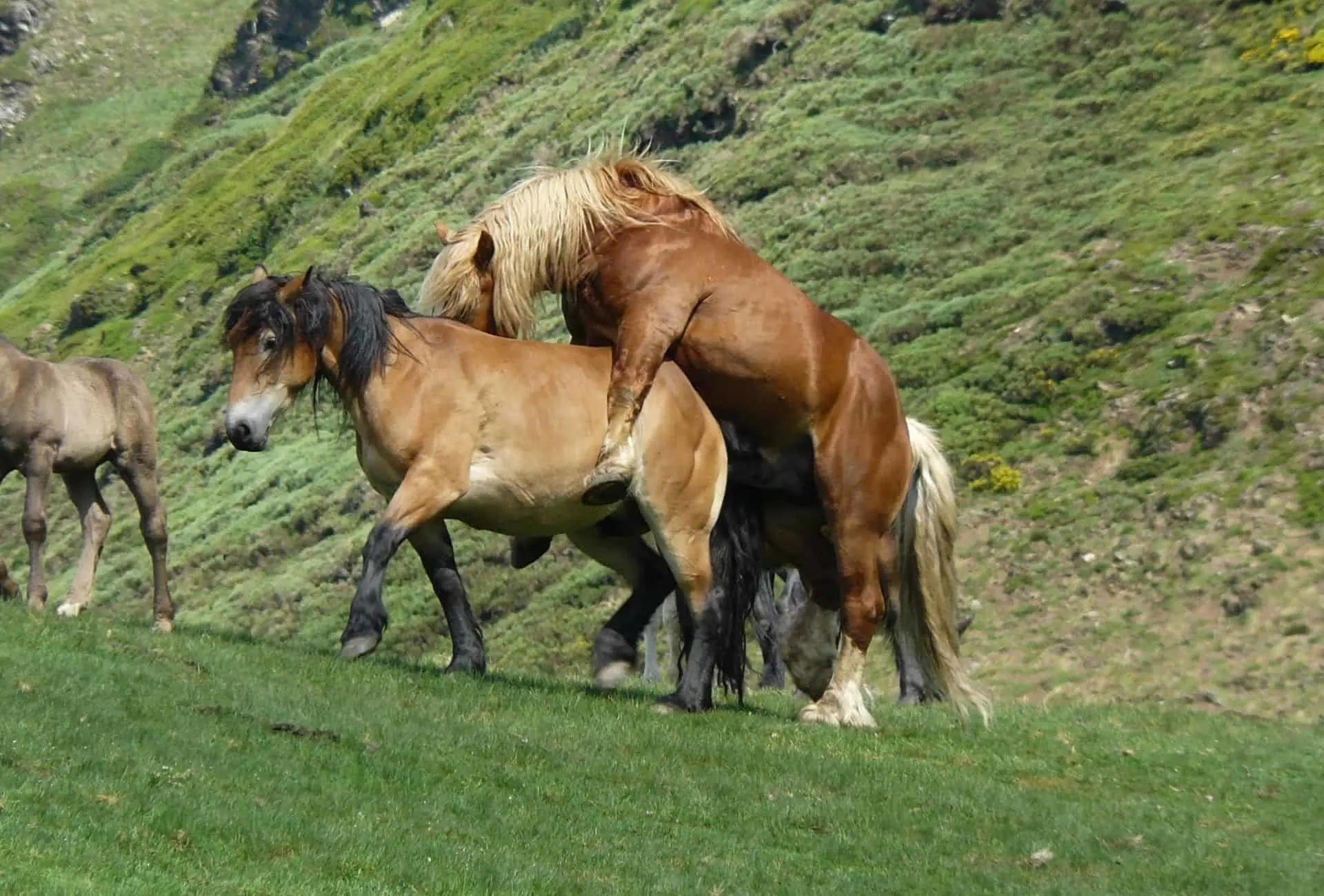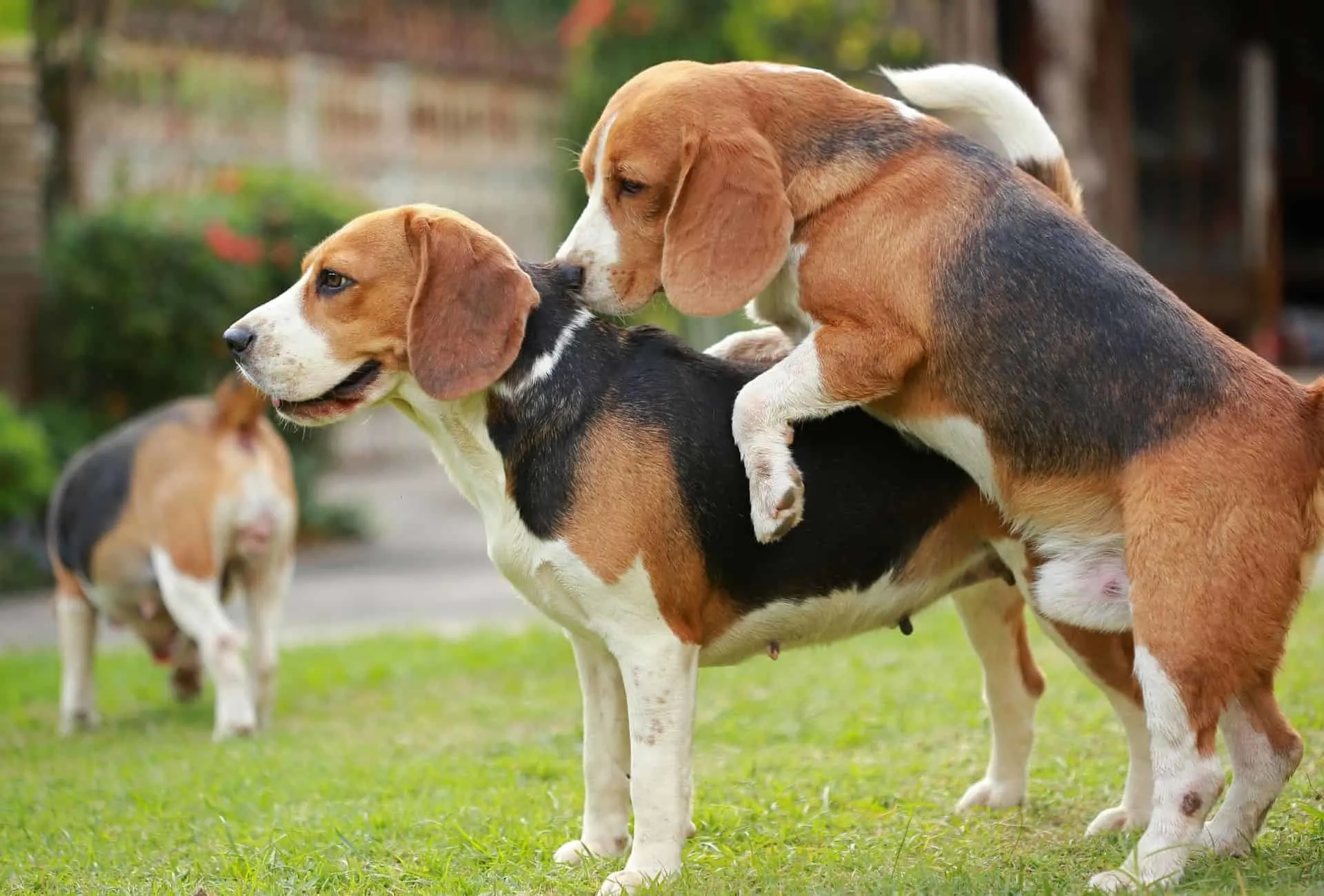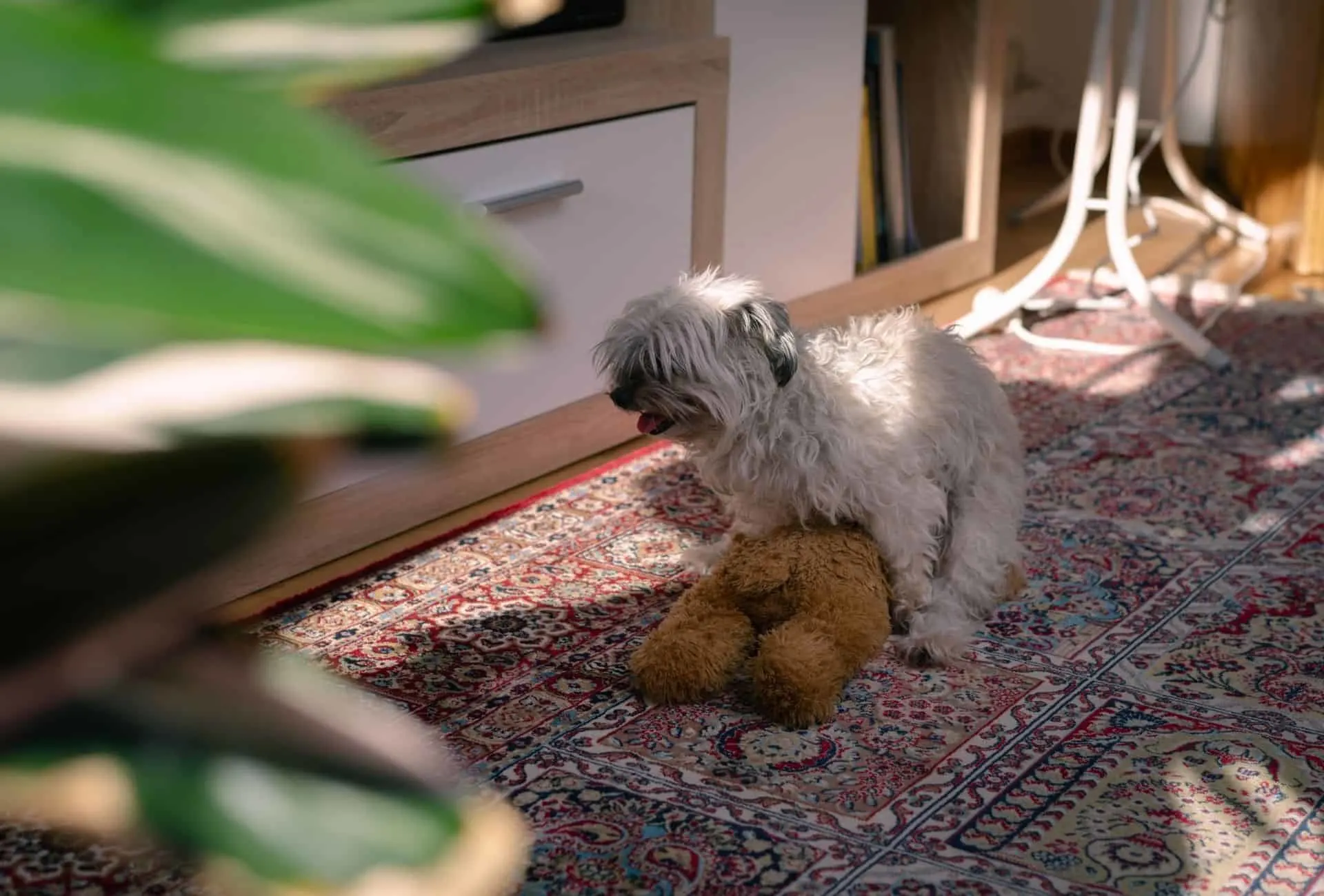For humans, being gay or homosexual refers to a sexual attraction or preference to those of the same sex.
Homosexuality in animals, which has been studied and discussed as far back as the 8th century BC, is defined quite differently.
Gay, or the preferred term when speaking of animals, homosexual, can be used to refer to various aspects:
- Same-sex behavior that is not inherently sexual in character
- Same-sex courtship or copulatory behavior occurring over a short period of time
- Long-term pair bonds between same-sex partners that might involve any combination of courting, copulating, parenting, and affectional behaviors.
Homosexuality in animals is behavioral rather than a sexual orientation, meaning they will have sex with whoever they want, whenever they want without regard for any of our perceptions or ideas about it.
To make things short and sweet, a dog cannot be gay, or at least not in the same way we recognize that a person can be.
Can A Dog Be Gay?
Because dogs can’t speak and communicate to us it can be difficult to distinguish between an animal that has a true long-term preference and an animal that engages in normal, homosexual behaviors.
The best and most recognized way to tell if a dog is truly gay is whether or not they are willing to breed with a dog of the opposite sex if the potential for offspring is high.
If a male dog is truly homosexual, he will refuse a female even when she’s in heat.
The majority of dogs who may be labeled as gay, however, will happily mate with a female to produce offspring.
To oversimplify, this means that most dogs who might be classified as gay are, in reality, willing to have sex with both genders, making them better identified as bisexual if they had to be labeled.
Homosexuality Among Other Animals
Homosexuality in animals and the associated behaviors are common and well documented worldwide.
Unfortunately, it is often seen as controversial since it asserts the naturalness of homosexuality in humans.

Remember that for animals, homosexuality is recognized as ‘homosexual behavior’ which is not inherently sexual, but may feature brief same-sex courtship, or long-term bonds potentially presenting any mixture of affectional, courting, copulating, or parenting behaviors.
Additionally, although the idea of animals being homosexual is primarily recognized in mammals, other animals like birds, fish, reptiles, amphibians, insects, and other invertebrates can all display homosexual behaviors.
Several years ago, the University of Oslo in Norway, opened a new museum exhibit that features models, photos, texts, and specimens of some of the nearly 1000 species where homosexuality has been observed.
There’s a reason why some dog owners may think their dog could be gay…
Why Do Dogs Hump?
Although most dog owners recognize it as a sexual act, humping or simple mounting can occur for many different reasons.
Some of these are natural or unavoidable, while others are an indicator of poor training or inappropriate canine behavior.
Typically, most humping is caused by nonsexual arousal, like excitement or play.
Dogs do not view humping as strictly sexual, and in many cases, it is simply a way for them to relieve stress or burn off energy, similar to running or jumping.
In younger dogs, particularly those who are not spayed or neutered, humping is a clear, sexual behavior.
There’s a medical procedure wrongly believed to be worth it due to the reduction or even elimination of humping and sexual mounting – neutering.
I’ve covered neutering in detail and outlined why it may actually be really bad for your dog.
Despite possible negative long-term effects, neutering can help with sexual behavior but it’s not a guarantee.

Consistent training can help but in the end, it’s a drive that can’t be fully eliminated in some cases.
In adult dogs, humping or even mounting that involves anal penetration can be a display of dominance.
This behavior is more extreme than other methods of dominance displays, so it is not seen as frequently. You should keep an eye on this behavior to ensure the dog is not becoming overly aggressive or performing this too regularly.
Many dogs also hump or mount without penetration when they are casually playing.
The excitement caused by new people, a familiar place, or other dogs to play with can easily trigger humping. This type of play is most common in puppies but is normal for older dogs if not performed excessively.
Typically one dog will mount another, a chase or wrestle will ensue, then they will switch and the dog who was previously mounted will mount the other dog.
Lastly, and less frequently, humping can be a sign of a medical condition affecting your dog.
Urinary tract infections, priapism (persistent erection), or irritation like skin allergies can all cause atypical humping.
This behavior is also commonly paired with the excessive licking of the genital area, rubbing against furniture, and or scooting along the floor as the dog tries to relieve their pain or discomfort.
Why Does My Dog Hump Me and No One Else?
If you find that your dog humps you and no one else, that can be a clue to the strength of their bond with you, or your dog could be overexcited or even have a behavioral issue (such as excessive attention-seeking).
It could be that you are their favorite or most trusted person of the entire household, or perhaps other factors are influencing your dog’s behavior.
As mentioned above, excitement can be a major reason for a dog to start humping.
If you have been at work for a large part of the day, or if your family is coming home after a couple of hours out, your dog may become uncontrollably excited and begin humping.
Another reason your dog may hump only you is that you have allowed yourself to be an easy target.
Perhaps another family member would yell at them, become physical (definitely not recommended), or punish them in some way, whereas you may accept the humping, and simply try to slip away.
A third reason your dog may hump only you is for your attention.
If other methods such as pawing or barking do not work, a dog may try humping to grab your attention.
Similar to the reason above, your dog will typically only target you in this manner if they have reason to believe it will get them what they want.
Why Do Female Dogs Hump Stuffed Animals?
Many dogs, female and male alike, commonly hump stuffed animals.
If we refer to all the possible reasons that a dog may hump, stuffed animals are no different.
Female dogs may hump stuffed animals because they’re excited, being playful, seeking attention, or asserting dominance.

A female dog may also hump stuffed animals as a way to eliminate excess energy, relieve stress, or reduce sexual frustration.
If you think back to the section above, most people are not willing or happy to be humped, and a stuffed animal will neither scold nor punish the dog.
You should be aware that if this is a new behavior, your dog could be suffering from an underlying medical issue.
Dog Humping Air
The reasons a dog may hump the air can include typical reasons for humping, but can also be influenced by a completely different matter.
As mentioned before, dogs may hump because they are overly excited, engaging in play, sexually driven, attempting to display dominance, or suffering from a medical condition.
The other reason some dogs can be seen humping the air is that they are socially insecure.
Maybe they feel that too much is out of their control, or they feel unsure of the appropriate behaviors they should be performing. Just because there is no person, dog, or stuffed animal being humped, that does not change the validity of the humping.
What About Training Dogs Not To Hump?
Like most other unwanted behaviors, most dogs can be trained, or conditioned not to hump.
Although it is easier to stop the behavior when it first starts in puppyhood, even adult dogs can potentially be trained out of it.
When figuring out how to stop your dog’s humping, you should start by identifying the cause of the behavior.
If your dog humps when he or she gets overly excited, regular exercise and obedience training may help.
Remember that each dog’s situation and trigger for humping will be different, so the appropriate training will need to be equally specialized.
Despite best efforts, there are some cases where some dogs simply refuse to stop humping. This is seen primarily in either older dogs whose humping is deeply planted in their normal routines, or shelter dogs, who are bored and have no one to stop them.
The best way to train any dog not to hump is to redirect their energy to a different behavior or task, like sit, come, or playing with a toy.
Concluding Canine Sexuality
Dogs, like many other animals, can exhibit a number of behaviors that make them appear gay.
Rather than being truly homosexual beings, most dogs are simply exhibiting homosexual behavior.
This can include short-term courtship or copulation as well as long-term relationships involving a variety of courting, copulating, parenting, and affectional behaviors.
Countless other animals, of all different types, also display these behaviors and can be labeled as homosexual.
Even considering these behaviors, dogs cannot be seen as gay or homosexual in the same way that people can be, since dogs lack any understanding of sexual orientation. A dog that is truly gay will refuse to copulate with a dog of the opposite sex even with the potential for offspring.
Most dogs, however, are willing to mate in order to produce offspring, even if they enjoy having intercourse with dogs of the same gender.
Humping, although somewhat related to canine sexuality, is also a normal behavior with a variety of causes like excitement, sexual arousal, play, display of dominance, or medical issues.
Dogs may hump each other, pillows, stuffed animals, or even just the air. Luckily, if you understand why your dog is humping, you’ll be better equipped to prevent the humping from escalating or potentially even train your dog not to hump.
